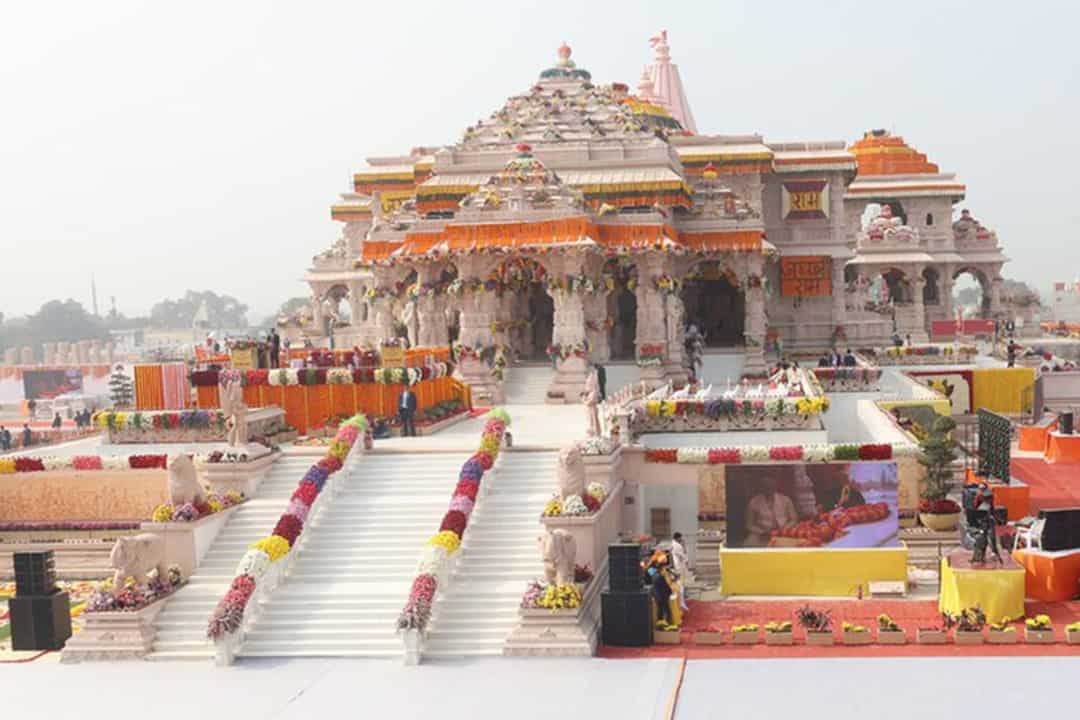On January 22, a centuries-old religious dispute came to an end in India, as the Ram Mandir in Ayodhya — translated in English as the Rama temple — finally opened to the general public. The site for the Ram Mandir has been disputed territory between Hindus and Muslims since the nineteenth century, and prior to the construction of this temple, the land was the site of the Babri Masjid, a mosque erected by the Mughal Empire in 1528.
Hindu activists have alleged since the 1850s that the Mughals had destroyed a Hindu temple to construct the mosque and have argued that Hindus are the rightful owners of the land, which they consider to be the birthplace of Lord Rama, a Hindu deity. This conflict co-existed in the legal and public spheres for years before the government blocked entry into the Babri Masjid in 1949, after Hindu activists illegally placed Hindu idols inside the mosque’s inner premises. Legal proceedings continued but the dispute spiralled and turned violent in 1992 when a mob of Hindu extremists tore down the mosque and subsequently triggered months-long nationwide religious riots.
The demolition of the Babri Masjid became a pivotal moment in Indian history and significantly heightened Hindu-Muslim tensions. Debates regarding the land’s ownership were rife in political and public realms before and since the destruction of the Babri Masjid. After years of failed attempts at out-of-court settlements and mediations — and after a government-commissioned archaeological survey whose reports have been disputed by several archaeologists, and which therefore seems dodgy — the Supreme Court of India ruled in favour of Hindu activists in 2019. The Court allowed for the construction of a temple on the disputed land, allotting a piece of land 25 kilometres from the original site to the Uttar Pradesh Sunni Central Waqf Board for the construction of a mosque.
The judgement was widely celebrated by many Hindus, including Hindu activists, and while the temple’s consecration on January 22 puts an end to a troubled chapter in India’s religious and communal history, I believe it simultaneously opens up a new chapter of unprecedented religious divisiveness and blatantly majoritarian politics.
The violent aftermath of the Temple’s inauguration
On the eve of the temple’s inauguration, clashes between Hindus and Muslims broke out across several states in the country amid reports of harassment and violence against religious minorities. A lot of this violence was related to the emotionally charged processions carried out in most cases by Hindu activists — sometimes armed — who celebrated and chanted religious slogans in front of mosques and Muslim-dominated neighbourhoods. Prime Minister Narendra Modi had previously urged his fellow Hindus to “show faith, not aggression” in their celebrations, but it is evident that, in many cases, his request fell on deaf ears.
However, the government has yet to speak out against the strife that has transpired in the wake of the Ram Mandir’s inauguration, and I strongly believe that the reason for its strategic silence is the fact that the temple is a political victory for Modi’s Bharatiya Janata Party (BJP). It is 2024, and Modi is up for reelection this year. Securing the support of the lucrative Hindu vote-bank is necessary for Modi to ensure another five-year term for him and his colleagues.
Politicisation of the Ram Mandir
Modi isn’t the first BJP leader to politicize the temple. Ex-BJP leader L. K. Advani spearheaded the campaign to build the temple throughout the late ’80s and ’90s, and several BJP leaders were named in the initial report against those responsible for the Babri Masjid demolition. The campaign to construct the temple has been taken up by the Rashtriya Swayamsevak Sangh (RSS) as well. The RSS is a far-right Hindu nationalist organization with close ties to several factions in areas across Indian society, including the BJP.
It does not come as a surprise to me, then, that both the 2019 court ruling in favour of Hindus and now the temple consecration have happened during election years. The BJP won in 2019, and another BJP victory looks all but certain this year.
This is why I am troubled by the question of whether the temple is either a victory for Hindus or a victory for India.
Several of my Hindu friends and relatives would like me to believe that this is in fact a victory for India. They say that the temple allows them to celebrate their religion in India — something that they previously were scared to do.
Several of my Indian friends and relatives would like me to believe that this is a victory for Hindus — and they also say that the temple stands as a monument for all that is currently wrong with the country. That it’s a 217 million USD illusion to distract you from the democratic backsliding, expanding class divides, the blatant commercialization, and manipulation of religion for politics.
For me, it is neither a victory for Indians or Hindus. The temple and all that it brings is a victory for Modi and for the BJP. It is a victory for the people who lawlessly demolished the Babri Masjid and now roam free, and a victory for all who have allowed secularism to decay in our country. For me, it stands as a victory for fascism. For me, the place that many consider to be the birthplace of Lord Rama now stands as little else but the burial site of the Indian democracy. Perhaps years from now someone will dispute this claim too. And perhaps then we will find ourselves distracted again.
Nidhil Vohra is a fourth-year student at St. Michael’s College studying peace, conflict and justice and political science. He is an International Affairs columnist for The Varsity’s Comment section.


